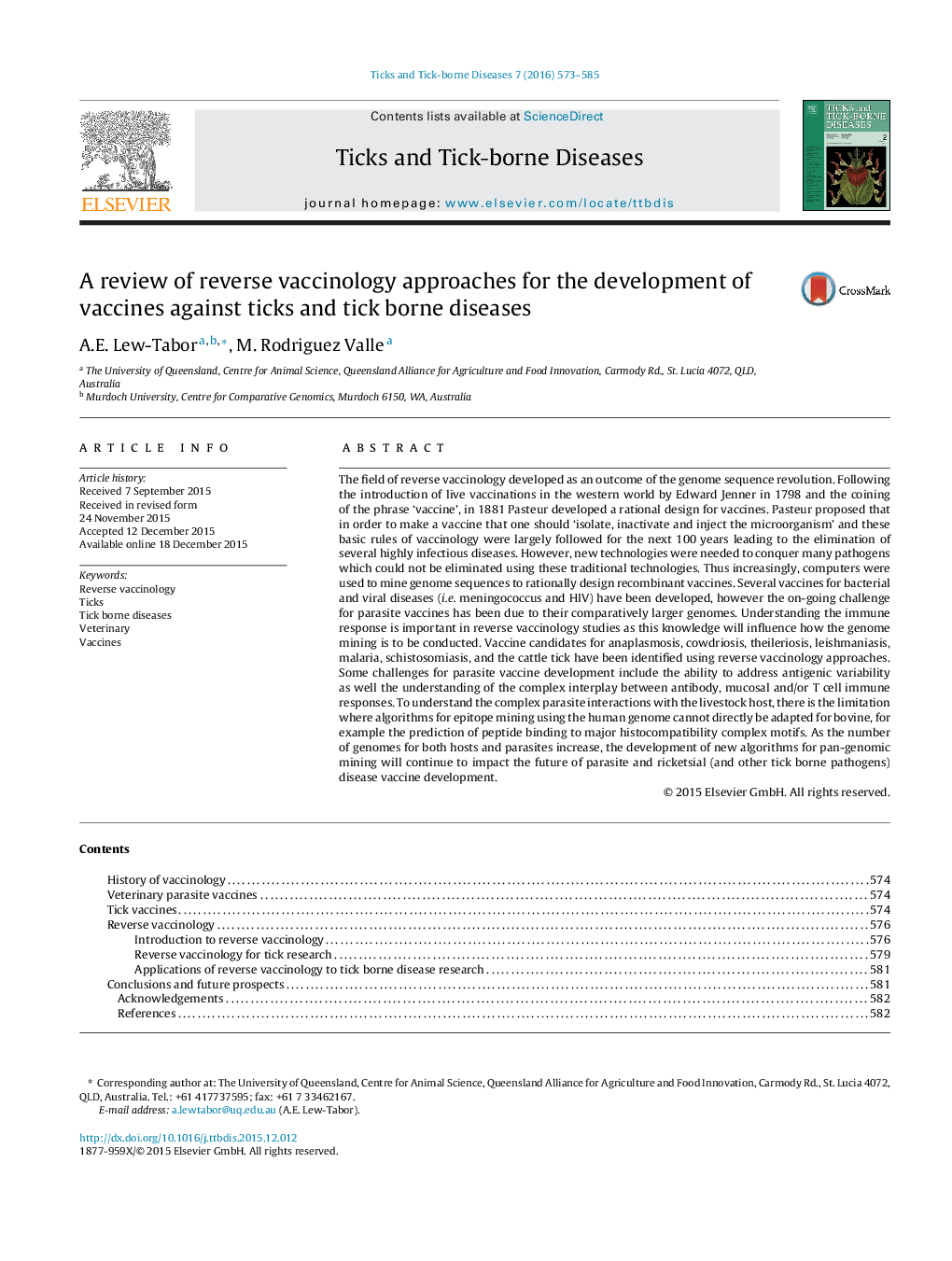| کد مقاله | کد نشریه | سال انتشار | مقاله انگلیسی | نسخه تمام متن |
|---|---|---|---|---|
| 5806990 | 1113101 | 2016 | 13 صفحه PDF | دانلود رایگان |
The field of reverse vaccinology developed as an outcome of the genome sequence revolution. Following the introduction of live vaccinations in the western world by Edward Jenner in 1798 and the coining of the phrase 'vaccine', in 1881 Pasteur developed a rational design for vaccines. Pasteur proposed that in order to make a vaccine that one should 'isolate, inactivate and inject the microorganism' and these basic rules of vaccinology were largely followed for the next 100 years leading to the elimination of several highly infectious diseases. However, new technologies were needed to conquer many pathogens which could not be eliminated using these traditional technologies. Thus increasingly, computers were used to mine genome sequences to rationally design recombinant vaccines. Several vaccines for bacterial and viral diseases (i.e. meningococcus and HIV) have been developed, however the on-going challenge for parasite vaccines has been due to their comparatively larger genomes. Understanding the immune response is important in reverse vaccinology studies as this knowledge will influence how the genome mining is to be conducted. Vaccine candidates for anaplasmosis, cowdriosis, theileriosis, leishmaniasis, malaria, schistosomiasis, and the cattle tick have been identified using reverse vaccinology approaches. Some challenges for parasite vaccine development include the ability to address antigenic variability as well the understanding of the complex interplay between antibody, mucosal and/or T cell immune responses. To understand the complex parasite interactions with the livestock host, there is the limitation where algorithms for epitope mining using the human genome cannot directly be adapted for bovine, for example the prediction of peptide binding to major histocompatibility complex motifs. As the number of genomes for both hosts and parasites increase, the development of new algorithms for pan-genomic mining will continue to impact the future of parasite and ricketsial (and other tick borne pathogens) disease vaccine development.
Journal: Ticks and Tick-borne Diseases - Volume 7, Issue 4, June 2016, Pages 573-585
